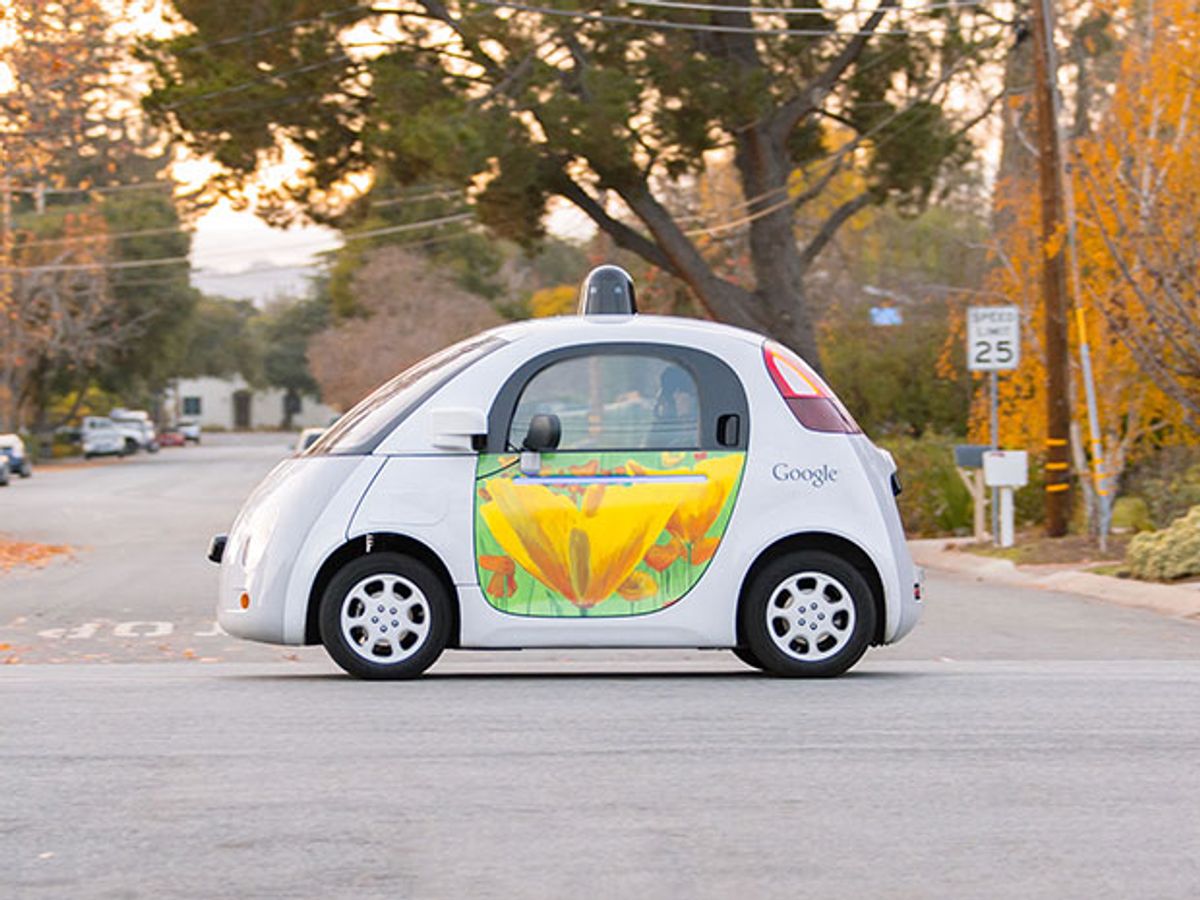Google self-driving cars are now allowed to honk when appropriate. That’ll likely be rare in the company’s Mountain View, Calif. home turf but more common, no doubt, should the car ever make it to Manhattan.
Honking is particularly valuable because it compensates for the inhuman silence of the electric drive on which Google’s cars depend. “Quiet isn’t always a good thing,” Google says in its latest monthly report. “Pedestrians and cyclists often rely on sound to alert them to a nearby car, particularly if they’re about to cross the street or change lanes. For people with visual impairments, the sound of an approaching vehicle can be critical information.”
The car can honk either to announce its presence or to scream “Stop!” at someone who needs screaming at. “If another vehicle is slowly reversing towards us, we might sound two short, quieter pips as a friendly heads up to let the driver know we’re behind,” Google says. “However, if there’s a situation that requires more urgency, we’ll use one loud sustained honk.”
Google’s engineers have fine-tuned their algorithm by listening to their program honk privately, via sounds emitted inside the cabin of the car, and by grading each instance for propriety. Evidently the hard part is deciding whether to tap the horn—or to lean on it.
The tapping, “I’m here” kind of honk appears to have been going on for some time. Back in October a Google spokesperson told Mashable that the car had honked on at least one occasion to announce its presence to a car emerging from a driveway.
Google’s report also records another accident. On May 4 a Google car—which at the time was being driven manually, that is, by a human being—struck a median in Mountain View while travelling at 14 kilometers per hour (9 mph), involving no other vehicle, causing no injuries, and damaging the car only slightly. The company’s fleet has had a number of accidents, but only one—a fender-bender with a public bus—in which the Google car was at fault.
Editor’s note: this article has been corrected to emphasize that the May 4 accident occurred when a human driver was in charge of the car.
Philip E. Ross is a senior editor at IEEE Spectrum. His interests include transportation, energy storage, AI, and the economic aspects of technology. He has a master's degree in international affairs from Columbia University and another, in journalism, from the University of Michigan.



